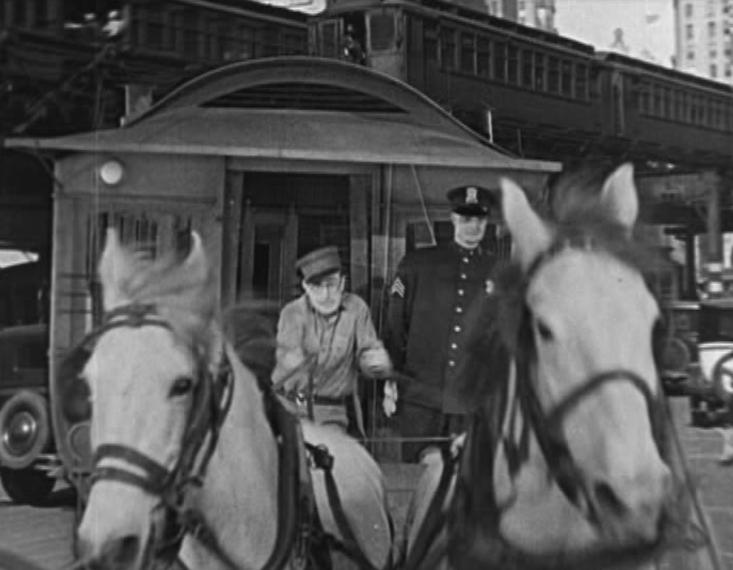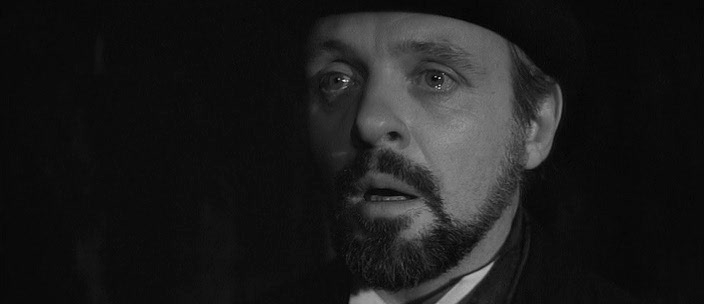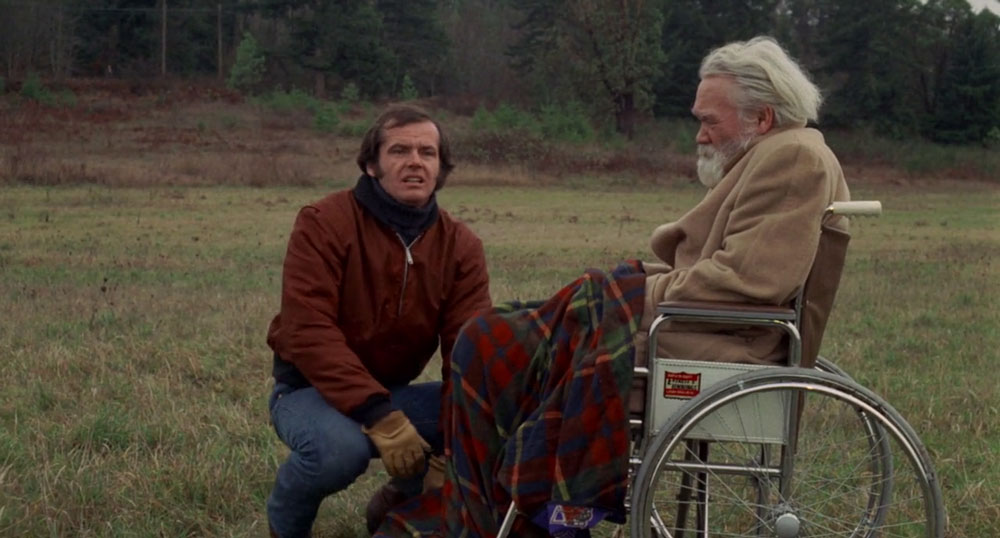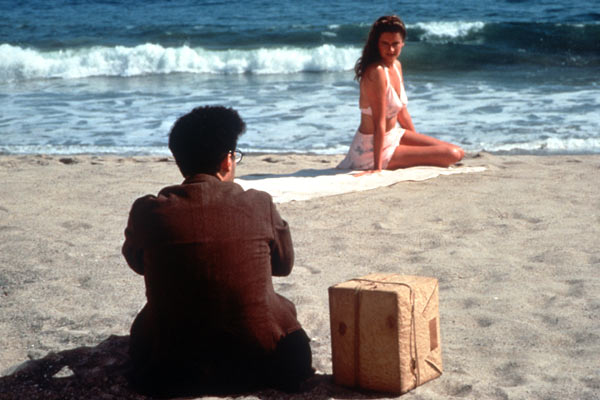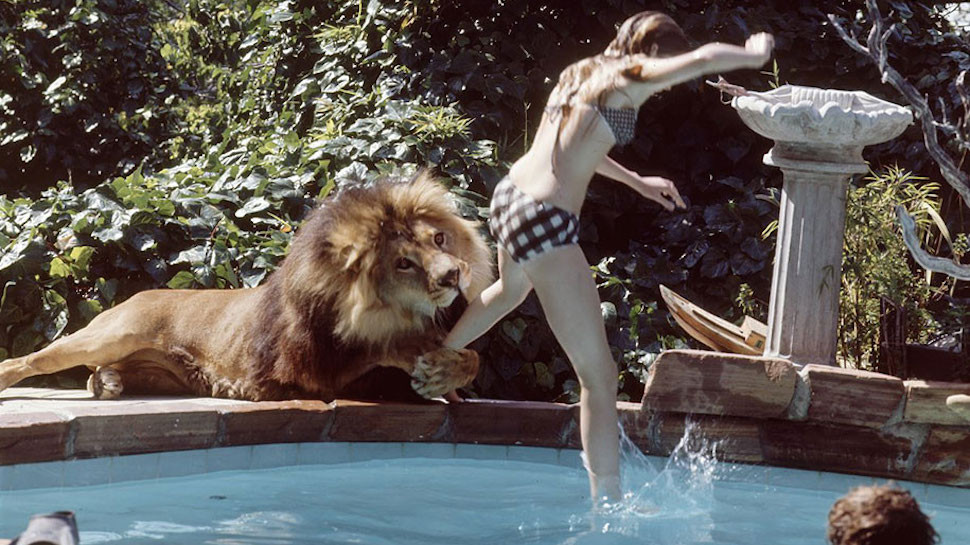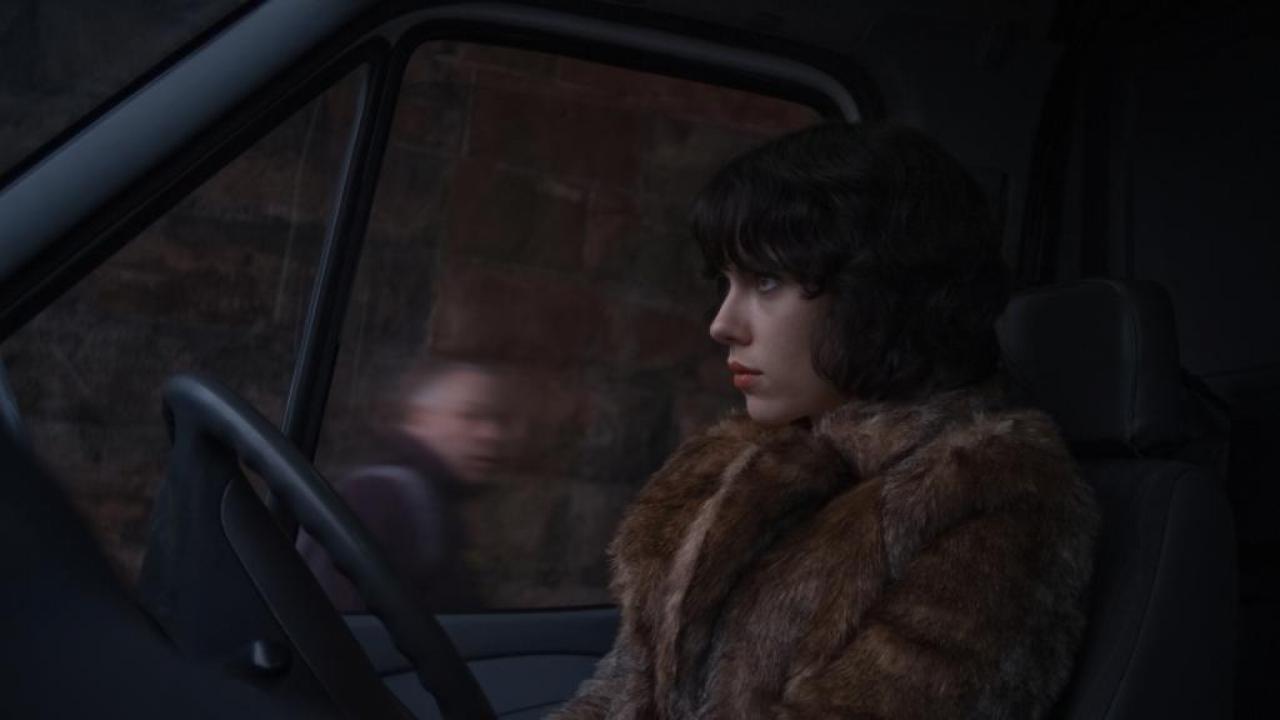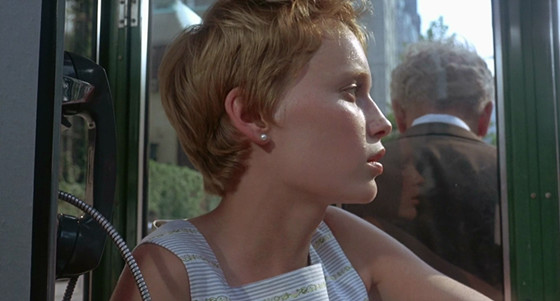8. Speedy (1928, Ted Wilde)
And lest you think that this kind of filmmaking began in either the American 70s or the Parisian 60s, you’d do well to check out Harold Lloyd in the silent film Speedy. All silent films are kind of fascinating to look at for unplanned moments: these films don’t have the control we have now. Most of the time, if you want an impressive stunt to be on screen, then you have to film an impressive stunt in real life. Speedy is no exception. There’s a great deal of terrifying footage burning through the streets of Manhattan, but none more so than Lloyd’s nail-biting high-speed chase on a horse drawn streetcar towards the end of the film.
At one point, the carriage slams into a bridge, throwing Lloyd from the vehicle, and leaving him having to improvise a new wheel to replace the shattered one. As it happens, the wheel scene was added to the film after Lloyd accidentally crashed during the chase. Lloyd (who, let’s all remember, lost his thumb and index finger in a publicity stunt years before shooting those hair-raising scenes on a clock face) knew that the best thing to do here is to keep the footage, and incorporate the crash into the narrative.
9. The Elephant Man (1980, David Lynch)
But all of this might be suggesting that the unplanned has to be something large, or dynamic, or exciting, and that’s not the case at all. Sometimes it’s all about the emotion of a scene. In David Lynch’s first studio film, Anthony Hopkins’ character meets John Merrick with silence, and the camera slowly tracks in on his face.
David Lynch weighs his dollies down as much as he can, so that they take a lot of effort to get started, and a huge effort to stop. What he likes about this is the dreamlike float that the dolly takes on as unseen hands do their utmost to bring it to a standstill.
What he hadn’t anticipated was the single tear that falls from Anthony Hopkins’ eye just as the camera stops. Now, let’s be honest here, these are the moments of magic, and highlight something that every filmmaker is looking to attain, those moments when the emotional quality of what you’re working on starts to bleed into everyone around you. Here’s something to look out for if you’re involved in filmmaking: When your cast are crying and you’re not telling them to, then something is either very right or very wrong.
10. Five Easy Pieces (1974, Bob Rafelson)
And sometimes it’s more than a single tear. Towards the end of Five Easy Pieces, Jack Nicholson and Bob Rafelson had a disagreement about how to play Nicholson’s monologue with his dying father. Rafelson thought Nicholson’s character should break down, but Nicholson didn’t like this at all, and wanted to take it to another place.
In the end, while running through the scene with the camera rolling, Nicholson starts crying. It’s slight at first, but then Nicholson comes out with the words ‘I don’t know what to say’ and everything becomes a lot more painful for him. Sure, we’ve seen tears before, but here it’s almost as though you’re watching both the character and the actor trying to hold it all back. It’s a powerful moment, and went against everything that Nicholson had in mind when he went into the scene, and raises an interesting point. Sometimes you go into a scene knowing full well what you’re expecting, and yet something unknown can creep in and change everything.
11. Barton Fink (1991, Joel Coen)
Any time an animal creeps into the frame you have a great opportunity to introduce a touch of chaos to a film. And in the Coen brothers’ Barton Fink, something remarkable happened. At the end of the film Fink meets a mysterious lady on the beach. They have a ‘what’s in the box?’ conversation full of ambiguity and long, meaningful looks.
Throughout the film Fink has seen an image of a woman on the beach, looking out to sea, and it’s clear that he’s wondering if this is the same woman. Inevitably, she takes up that familiar pose from the painting when suddenly a seagull flies into the top of the frame, circles, and then dives underwater. This is complete coincidence, but ends up becoming the punctuation point that ends the entire film, in a similar way to what happened with The Last Temptation of Christ.
For a bonus point, the random actions of birds appeared in a previous Coen Brothers’ film, their debut Blood Simple (1984) has a scene where a flock of birds takes off as a car drives down a lonely highway. It can take a huge amount of careful planning to get a shot like this, or you can just get lucky.
12. Roar (1981, Noel Marshall)
Getting lucky is something that does and doesn’t happen in Roar. The film is undergoing something of a renaissance at the moment, and new trailers for the film proudly proclaim that no animals were harmed in its making (which may not be true) while 70 cast and crew members were. The luck here is that no one was killed, and watching the film will leave you astonished that this is the case.
You can really take any scene of Roar as an example of breathtaking audaciousness with safety, but these lists need to pick a scene, so let’s talk about the tiger attack sequence. What happens is you watch agog as real humans grapple in and out of the water with real tigers. The blood you see on screen is real, both from the humans and the cats. There was simply no way to safely orchestrate this film. Even filming the most innocuous of animals will prove troublesome; filming hundreds of big cats, mixed together with people is starting to move more towards not organized chaos, but utter chaos.
13. Under the Skin (2013, Jonathan Glazer)
However, there are ways of introducing elements of chaos that allow you to stay in control of the film. In Under the Skin Scarlett Johansson shares her frame with a number of non-performers at different points: ordinary members of the public who have no idea that a film is going on around them, but we’re going to talk about the scenes in the van where she picks up a series of men.
Now then, the execution here is fascinating. Why? Because what we have is a series of locked frames: The cameras and microphones are hidden in the van that Johansson’s unnamed character drives, and Johansson is in sole control of what happens in this frame. Her sparring partners have no idea that they’re part of a film, so it’s up to Johansson to take control of that frame and to direct her passengers herself: she’s holding all the cards. It’s a bold, risky move, but instead of considering how it could have gone wrong, the focus should be how it all goes so right.
It’s back to where we came in, back to handing control over to the other members of the team, and giving them their own space to perform the high wire act. Sure, sometimes people fall, but when they succeed, as Johansson does here, it’s exhilarating.
14. Rosemary’s Baby (1968, Roman Polanski)
You can take this concept of introducing chaos into a frame a little further, by choosing not to share key information with the performer. So the story goes, this is what happened during the filming of the chest-burst scene in Alien (1979, Ridley Scott) to get those horrifying, shocked responses from the cast, but what Polanski does in Rosemary’s Baby is arguably far cleverer.
Mia Farrow is on the phone as Rosemary, speaking to an actor whose sudden attack of blindness cost him the lead in a play, subsequently giving the opportunity of a lifetime to her husband, Guy. What she wants to know is whether Guy took a personal item from the actor, and therefore might be involved in a coven. Unbeknownst to Farrow, the voice on the other end of the phone is Tony Curtis, a close personal friend of hers.
Polanski withheld this piece of information from the actress because he wanted her to wrestle with this confusion over the voice of the person on the other end of the phone as the camera was rolling. Polanski’s thought process was that this would bleed into the performance, and unsettle her, creating an ambiguous quality of confusion.
The unplanned doesn’t end there either: another scene in the film features Rosemary crossing a busy New York street as oncoming traffic moves all around her. Completely unplanned, this genuinely is Mia Farrow stepping out into a murderously busy street. To console her, Farrow was told “Don’t worry, no one will hit a pregnant woman.” A complete gamble, but it paid off in spades.
Author Bio: Ben Woodiwiss holds a Master’s Degree in Contemporary Cinema Culture Studies and is a Writer/Director at Look/Think Films. If he’s not talking about films he’s seen, then he’s talking about films he’s made, or writing new ones, and is very likely to be either smoking or drinking coffee right now. Follow him on Twitter at @benwoodiwiss.
